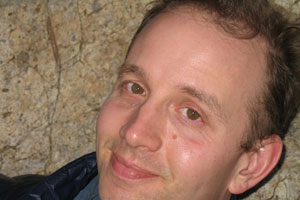
Eric Magrane
Disciplines: Communications, Geography, Natural History, Science Writing, Social Science, Visual Arts, Creative Writing
Regions: Arizona Uplands, Sky Islands, Urban Centers
Chapter: Tucson
Website: ericmagrane.com
Email: This email address is being protected from spambots. You need JavaScript enabled to view it.
Eric Magrane is a poet and geographer. He is the first poet in residence at the Arizona-Sonora Desert Museum and is the founding editor of Spiral Orb, an experiment in permaculture poetics. His research areas include creative geographies, the geographies of art & science and art & environment, science communication, environmental humanities, and narratives of climate change and the Anthropocene.
He is coeditor, with Christopher Cokinos, of The Sonoran Desert: A Literary Field Guide, illustrated by Paul Mirocha and forthcoming from University of Arizona Press (2016). He holds an MFA in creative writing and is currently a PhD candidate in geography at the University of Arizona, where he also works on art & environment with the Institute of the Environment.
See more about his creative work, research, and publications at his website.
A concept of geopoetics informs how I approach creative and artistic practice. The ‘geo’ refers to the earth, while poetics—in its broadest sense—refers to making: ‘earth-making.’ What kind of earth are we making and what kind of legacy do we want to leave for future generations, of all species?
In coming to this art-science project as a poet and a geographer, I think a lot about how poetics can intersect with different sites and environments. I draw on my background in political ecology, social theory, and some biogeography, as well a past life as a hiking guide and naturalist, in making creative work. For my participation in this collaboration, I will likely draft a poem series that interacts with the work of the scientist with whom I’m paired. My hope would be that the poems wouldn't simply illustrate the science, but would engage and push the ideas/methodology/broader impact to a new place. They might take the final form of a book or chapbook, web publication, or an installation.
To see some examples of how I think about art & science, see the projects page on my website.
